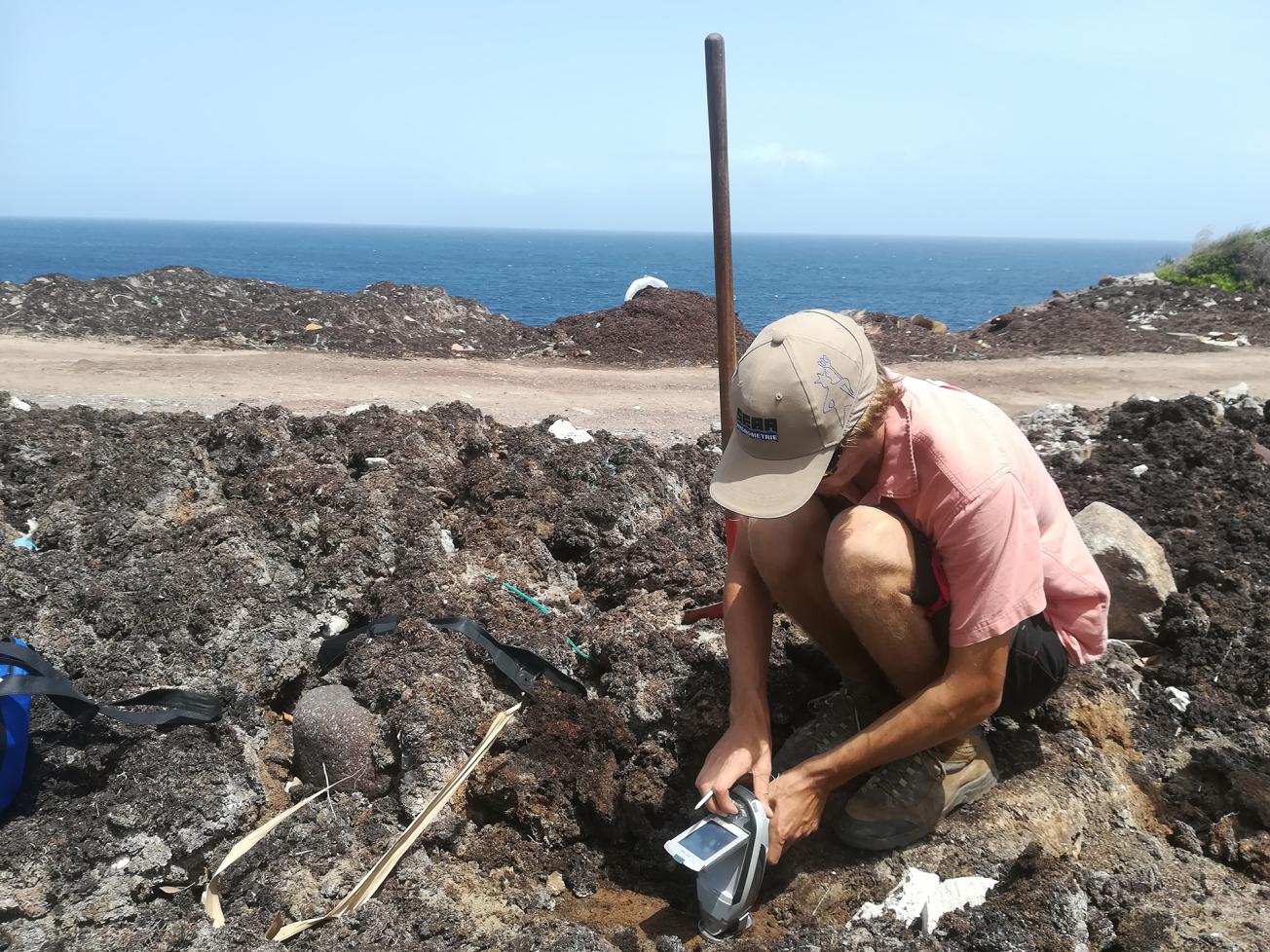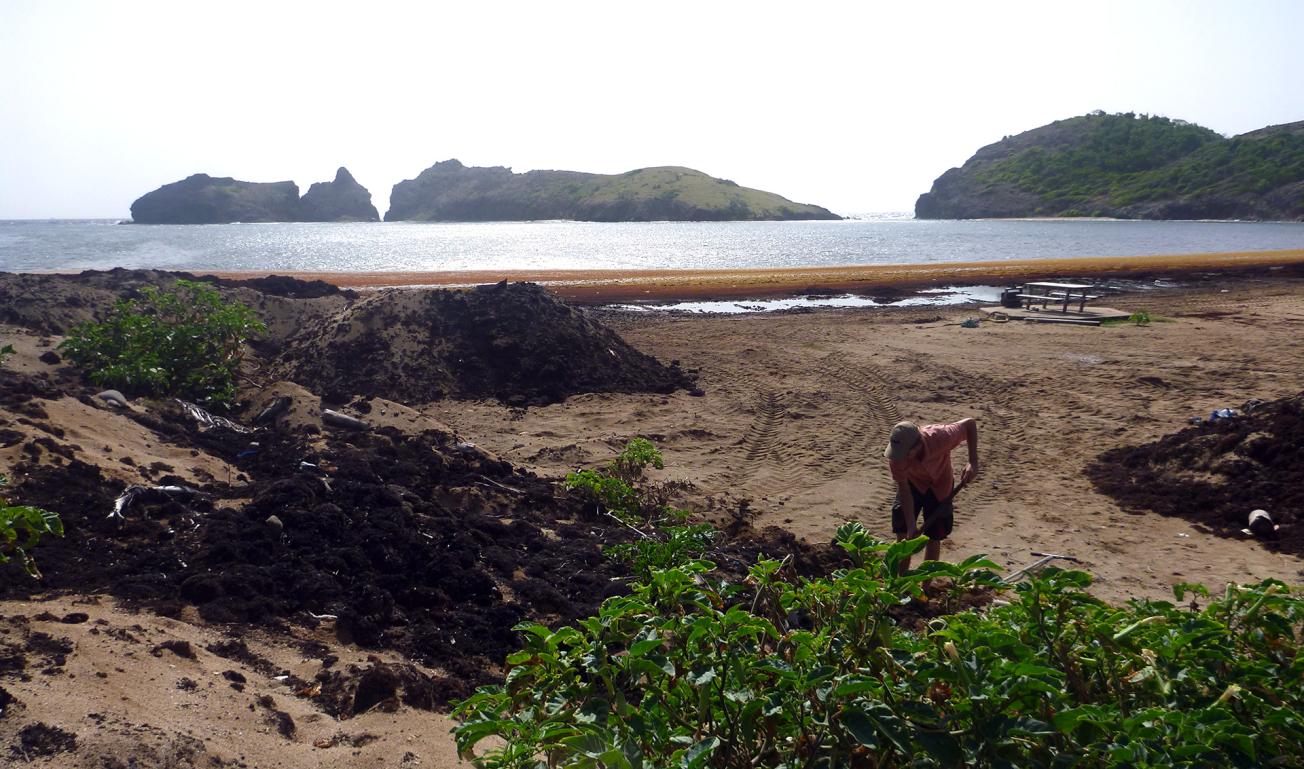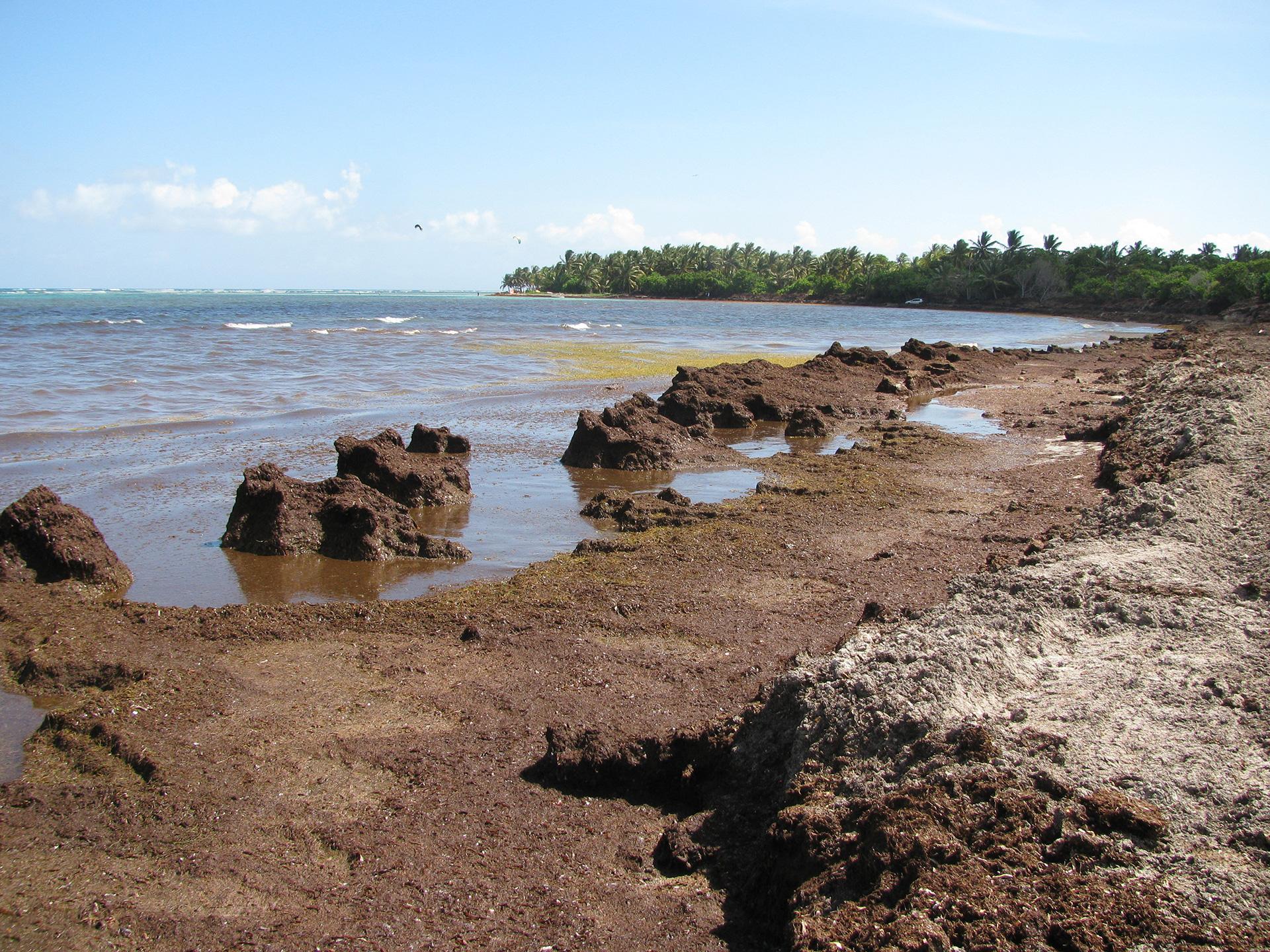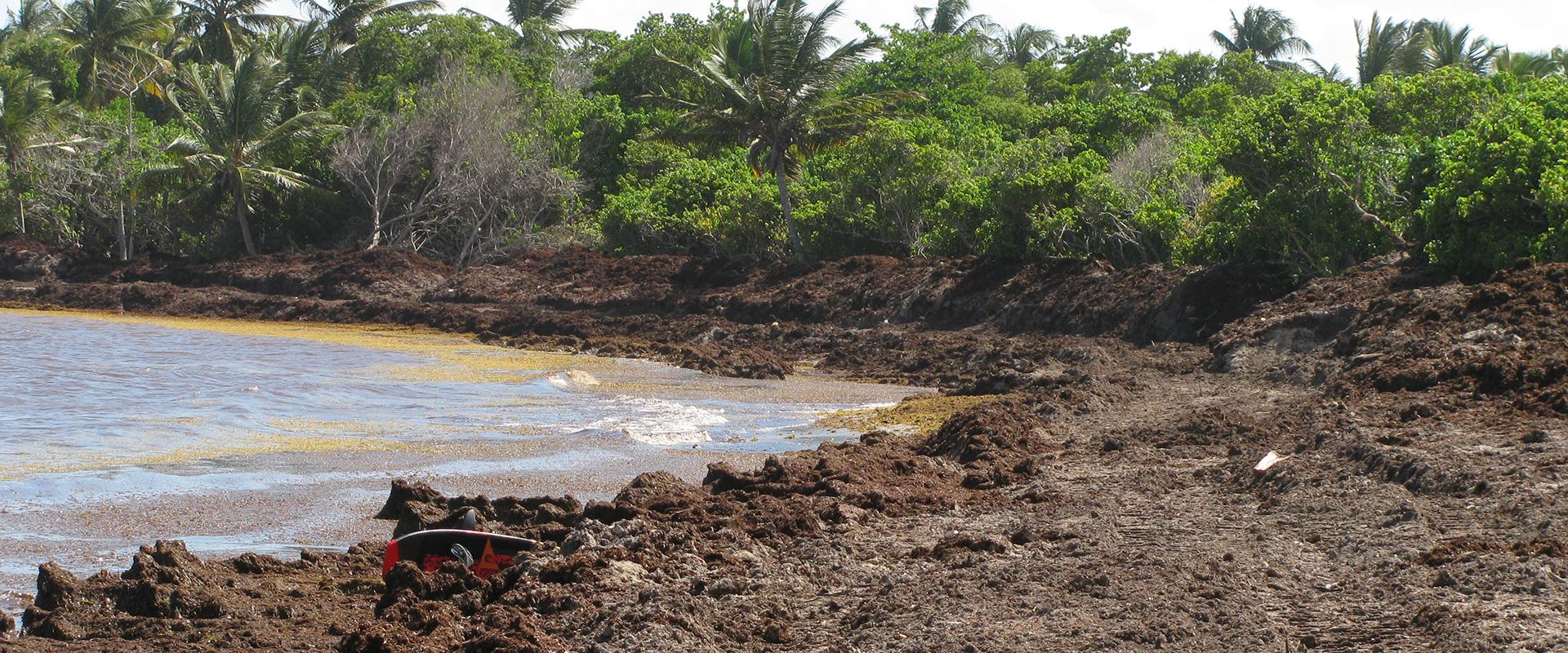
FluoX measurements of metal content at a sargassum storage site (Terre-de-Bas, Guadeloupe, 2019).
© BRGM - Fanny Le Loher
The need
The large quantities of sargassum washing up on the Caribbean shores since 2011 have had serious consequences for the environment (asphyxiation of marine fauna and flora), the economy (oxidation of electronic devices, businesses near the coastline having to lay off employees) and health (toxic hydrogen sulphide and ammonia gases produced by decomposing sargassum). At present, the seaweed is spread on sites that are not specifically designed for it, most often behind the beach. Sargassum has high concentrations of arsenic and sometimes chlordecone, so it is necessary to quantify the impact of these storage sites in terms of soil and water pollution.

Sampling at a sargassum storage site (Terre-de-Haut, Guadeloupe, 2019).
© BRGM - Fanny Le Loher
The results
This survey highlighted significant differences in impact from one storage site to another. In general, arsenic, chlorides (and the associated sodium) are considered to be the three elements directly produced by sargassum with a real impact on the environment of storage sites. It should be noted that most of the sites storing the algae are also concerned by anthropogenic pollution, either concurrent with or prior to the arrival of the seaweed (illegal or authorised dumps, disposal of rubbish or bulky waste, etc.).
The direct impact of sargassum storage, although relatively limited at this stage, has been clearly identified through the presence of arsenic and the salinisation of the water. Given the relatively short periods during which the sites have been used (3 to 4 years), the continued spreading of sargassum under similar conditions is likely to increase the environmental impact. It is also possible that the decomposing sargassum, owing to the characteristics of its basic leachate, could lead to the remobilisation and/or transfer of anthropogenic pollutants, such as heavy metals.
Using the results
The findings of the survey provide a technical basis for establishing new recommendations for the treatment of sargassum as part of the Sargasse II plan of action put in place by the prefecture.

We needed to know more about the impact of arsenic on the sargassum stored in soil, surface water and groundwater. As a result of this survey, we have access to information that will enable us to manage sargassum-spreading sites more closely. While the current impact remains limited, we must continue to monitor the consequences of long-term storage in terms of soil pollution. We are therefore also working on solutions for the recycling of these algae.







